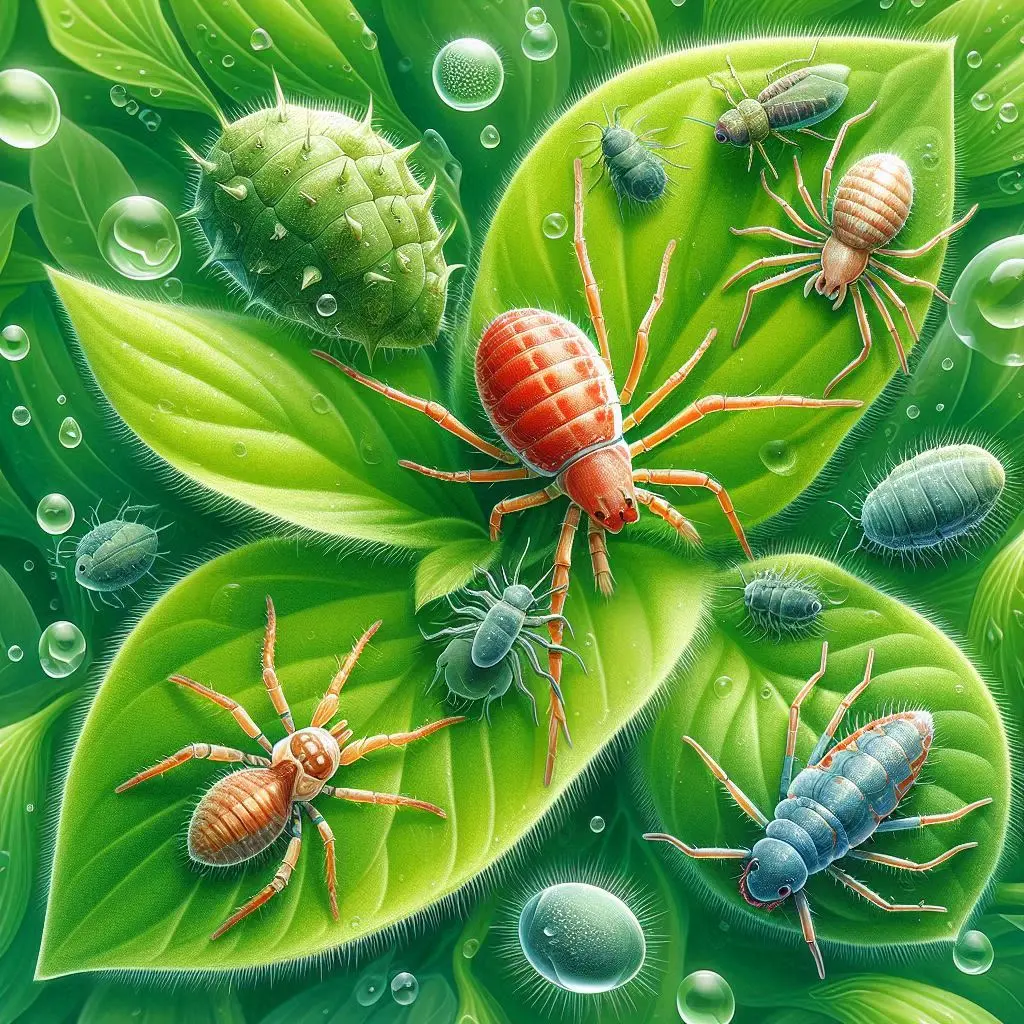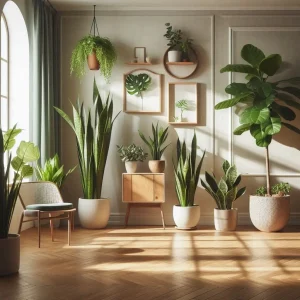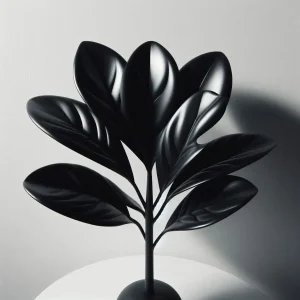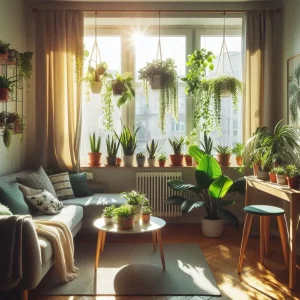| Disease | Description | Prevention and Treatment |
| Aphids | Greenhouse pests that feed on plant sap. | Use pesticides or a mixture of warm water and soap for treatment. |
| Red Spider Mite | Small red pests that create webs on plants. | Dusting and watering to create a less humid environment. |
| Mealybugs | White insects that cluster on leaves. | Remove affected parts and use pesticides if infestation is severe. |
| Scale Insects | Various types of pests causing significant damage. | Use pesticides for treatment. |
| Thrips | Small yellow insects causing spotted appearance on flowers. | Use pesticides for treatment. |
| Leaf Spot | Bacterial disease causing brown spots on leaves. | Cut off affected leaves for treatment. |
| Fungus Gnats | Small insects laying eggs in compost. | Use Malathion in water for irrigation. |
| Earwigs | Insects with pincer-like tails feeding on leaves. | Catch and remove the insects. |
| Sooty Mold | Black fungus growing on honeydew secreted by pests. | Remove mold with a damp cloth and wash affected areas. |
| Botrytis (Gray Mold) | Fungal disease affecting stems, leaves, buds, and flowers. | Ensure good ventilation and avoid overcrowding of plants. |
Types of Pests in Indoor Plants
Page Contents
Toggle1- Aphids, a menace for indoor plants
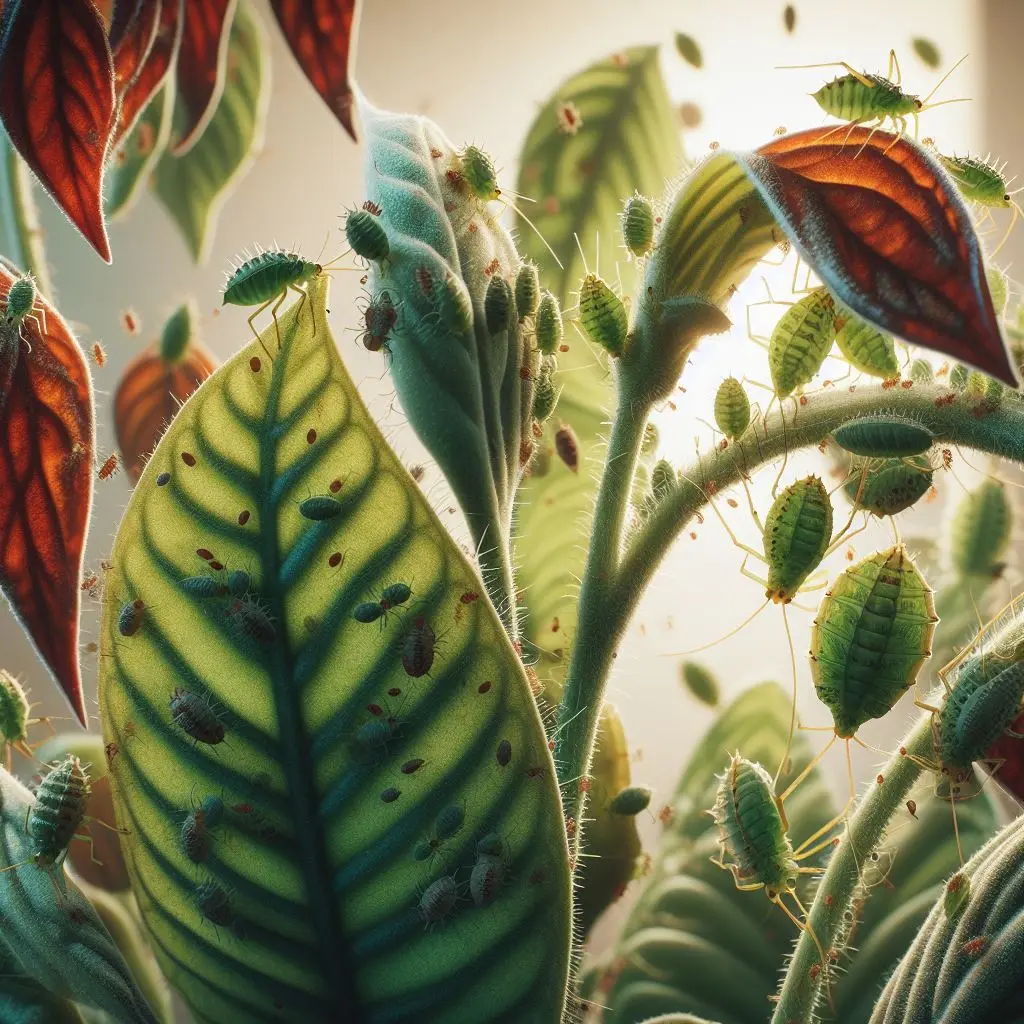
Aphid Color: Green + Sometimes Gray + Orange
Growing Location: On young stems + leaf tips
Aphids are one of the pests that infest indoor plants. Upon their presence, they begin to feed on the plant, causing damage to the leaves in the process. Additionally, aphids secrete a sticky substance called honeydew, which adheres to the plant and spreads this disease.
Signs of Aphid Presence:
Presence of a sticky substance on the plant and soil
Due to the collective activity of aphids, their presence is easily noticeable.
Prevention and Treatment Methods for Aphids
To prevent this disease, it is better to be cautious with older leaves and plants, as older plants are more susceptible to this pest.
To treat these pests in indoor plants, you can use pesticides or the following method:
- Mix warm water and soap together.
- Pour the mixture onto the leaves using cotton, causing the aphids to disappear.
- Allow the mixture to remain on the plant for 5 minutes.
- Then rinse the leaves with clean water.
Sometimes, using this mixture once is sufficient for treating these pests in indoor plants. However, if the plant’s condition does not improve, you can try this method again. One important point to note about this method is to avoid contact of the water and soap mixture with the plant’s soil.
read more: 9 easiest seeds to grow indoors
2- Red Spider Mite, a Pest of Indoor Plants
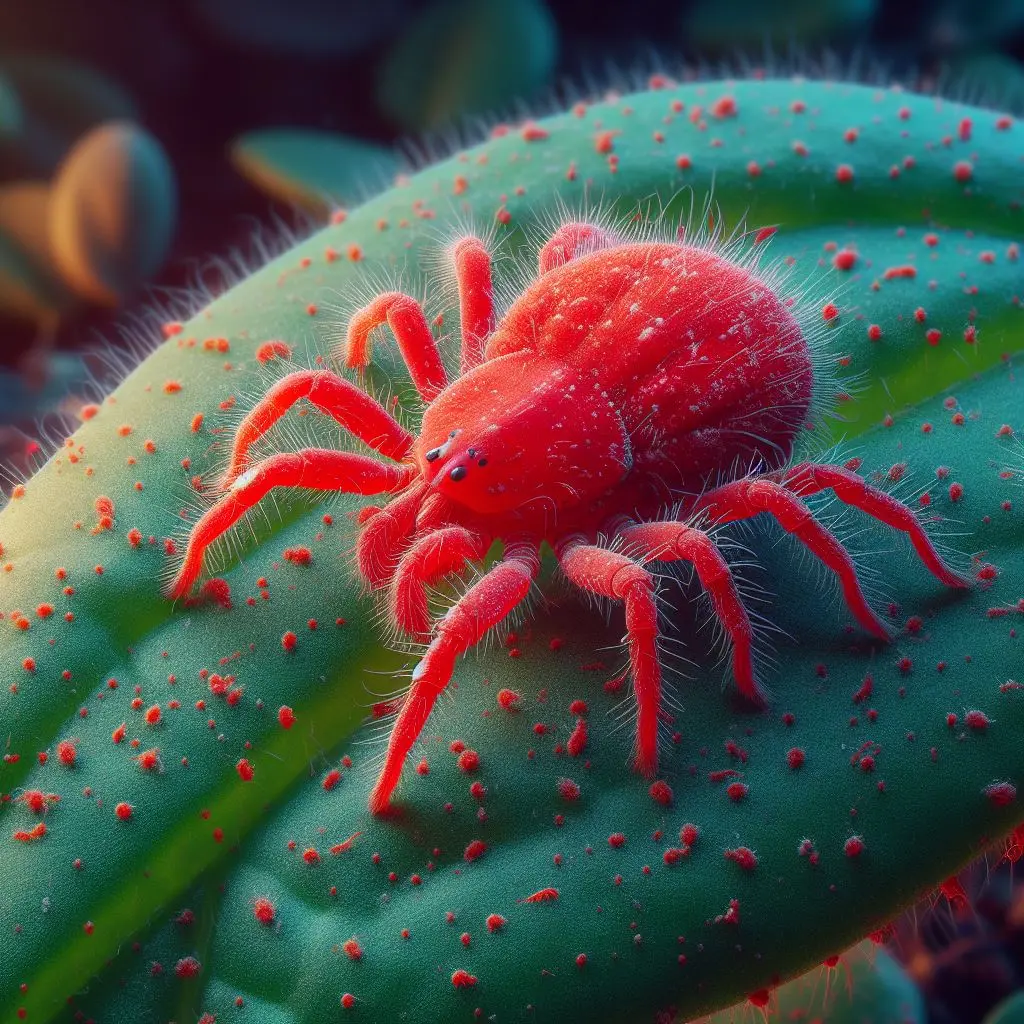
Mite Color: Red
Growing Location: Under the leaves, between leaves and stems
This pest is highly dangerous. The red spider mite creates abundant webs on the plant to reach food and shelter, moving towards its target through these webs. The presence of this pest does not have very dangerous consequences, though, if you make efforts to treat it.
Signs of Red Spider Mite Presence:
Tangled webs
Holes in leaves
Brown spots on leaves
After observing these signs, it is better to take action to treat these pests in indoor plants.
Prevention and Treatment Method for Red Spider Mite:
An interesting point about this pest is its aversion to moisture and humid environments; therefore, by dusting and watering, this disease can be eradicated.
Additionally, you can adjust the plant’s watering and temperature to easily get rid of them.
3- Mealybugs, a Disease of Indoor Plants

Mealybug Color: White
Growing Location: On stems + Under leaves
This type of indoor plant pest, compared to others, has a larger size. It ensures its survival and nutrition by feeding on the plant’s sap.
Signs of Mealybug Presence:
Clustering of mealybugs on leaves
Yellowing of leaves
Leaf drop
Upon observing these signs, it is better to act promptly for treatment.
Prevention and Treatment Method for Mealybugs:
If the infestation is in its early stages, you can separate the affected part from the plant by spraying water and manually removing it.
However, if the disease has spread extensively and its growth is significant, you should treat the plant with pesticides.
4- Scale Insects, Various Diseases of Plants
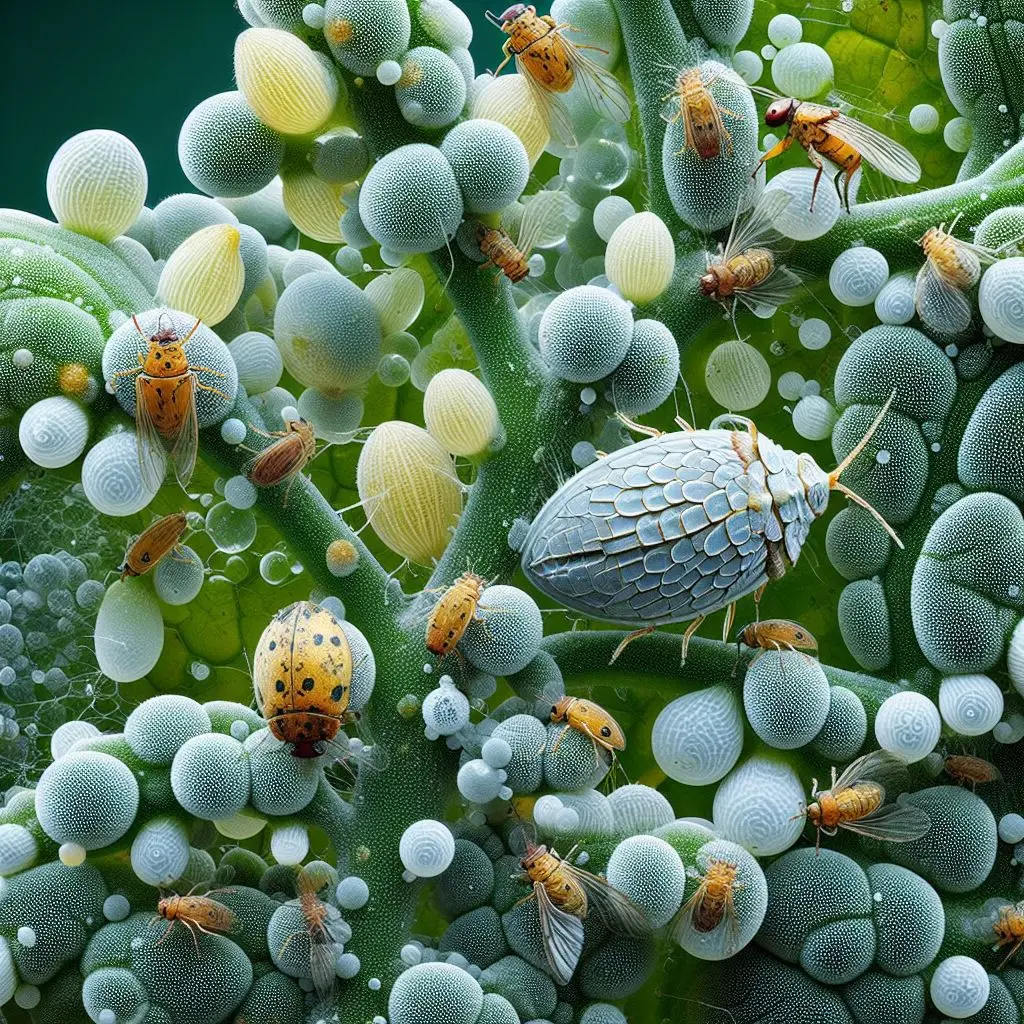
Scale Insect Color: Orange + Brown + White
Growing Location: Various parts of the plant
This pest may exist in various forms and appearances, causing significant damage to the plant.
Signs of Scale Insect Presence:
White and brown spots on leaves
Leaf drop
Prevention and Treatment Method for Scale Insects:
Separate the pests from the plant by brushing them off with a mixture of water and soap. However, if these indoor plant pests have significantly progressed, it is better to resort to pesticides.
You can use pesticides and insecticides to treat this disease and restore the health of the plant.
5- Thrips, a Disease of Apartment Plants

Thrips Color: Tiny yellow, problematic, and white insects
Growing Location: Various parts of the plant
If you quickly detect this disease, treatment is easy and hassle-free. This pest tends to target slow-growing plants more.
Signs of Thrips Presence:
Spotted appearance on flowers
The plant loses its shape and appearance.
Prevention and Treatment Method for Thrips:
For treating this type of indoor plant pest, it is better to use pesticides and fungicides to restore the plant’s health. Spray the plants with Malathion, Dresis, and Permethrin, and repeat if necessary.
6- Leaf Spot, a Bacterial Disease

Growing Location: Roots + Stems + Leaves
This disease has a treatment method, and for prevention, immediate action must be taken to treat other apartment plants.
Signs of Leaf Spot Disease:
Moist and brown spots on the leaves, which can spread.
Prevention and Treatment Method for Leaf Spot Disease:
For treating this disease, it is better to cut off the affected leaves to prevent the spread of the disease.
7- Fungus Gnats, Two-Winged Fungus Feeding Insects
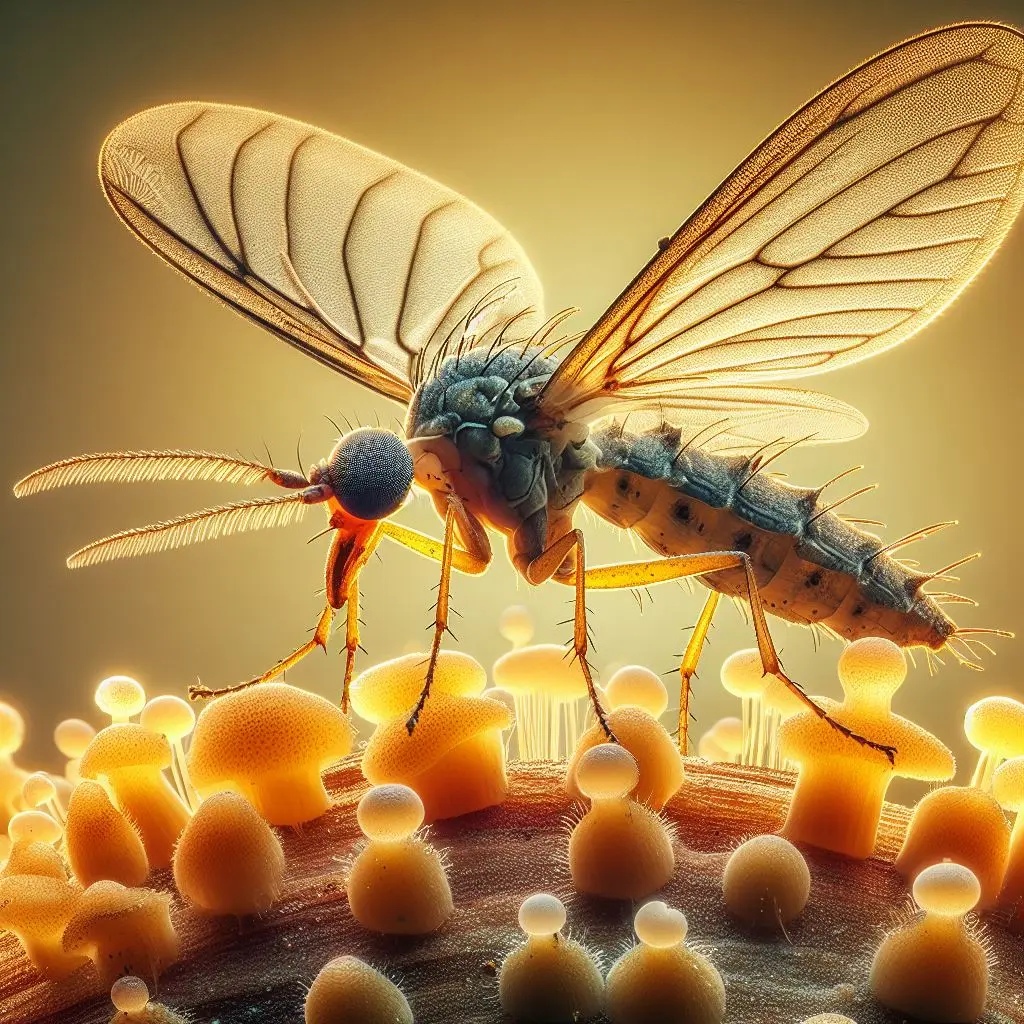
These small, black insects lay eggs on compost. The larvae of these insects feed on organic matter present in the compost and rarely cause harm to the roots.
Prevention and Treatment Method for Fungus Gnats in Indoor Plants:
You can dissolve Malathion in water for irrigation and pour it around the base of the pot to resolve the plant’s issue.
8- Earwigs
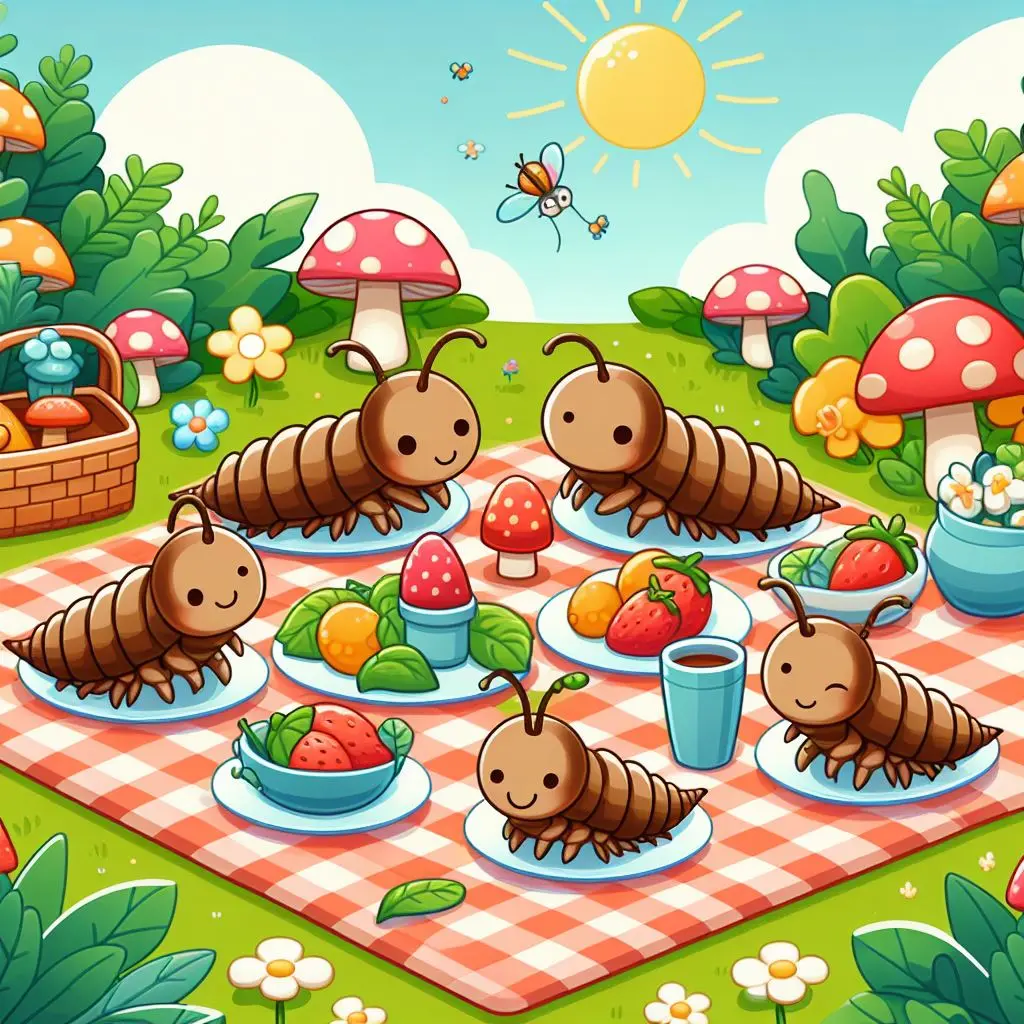
These insects have dark brown bodies and pincer-like tails. They are rarely seen on indoor plants. They remain hidden during the day and feed on leaves and petals at night, creating irregular holes.
Prevention and Treatment Method for Earwigs in Indoor Plants:
The insect should be caught and removed. Shake the flowers. Spraying is rarely necessary.
9- Sooty Mold
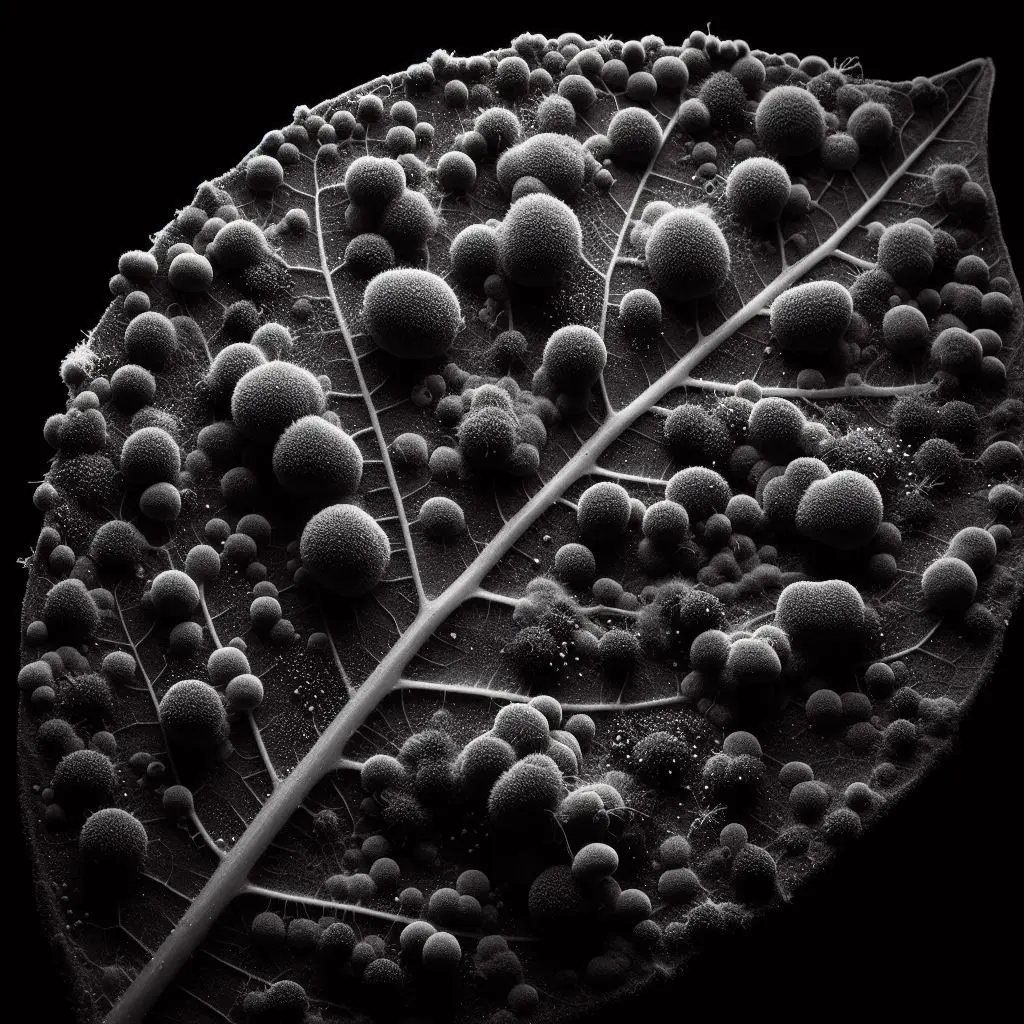
This black fungus grows on the honeydew secreted by aphids and other pests. By blocking the pores and preventing light from entering, it weakens the plant and reduces its growth.
Prevention and Treatment Method for Sooty Mold in Indoor Plants:
Remove the mold with a damp cloth. Wash the affected areas with warm and clean water.
10- Cottony Cushion Scale (Mealybug)
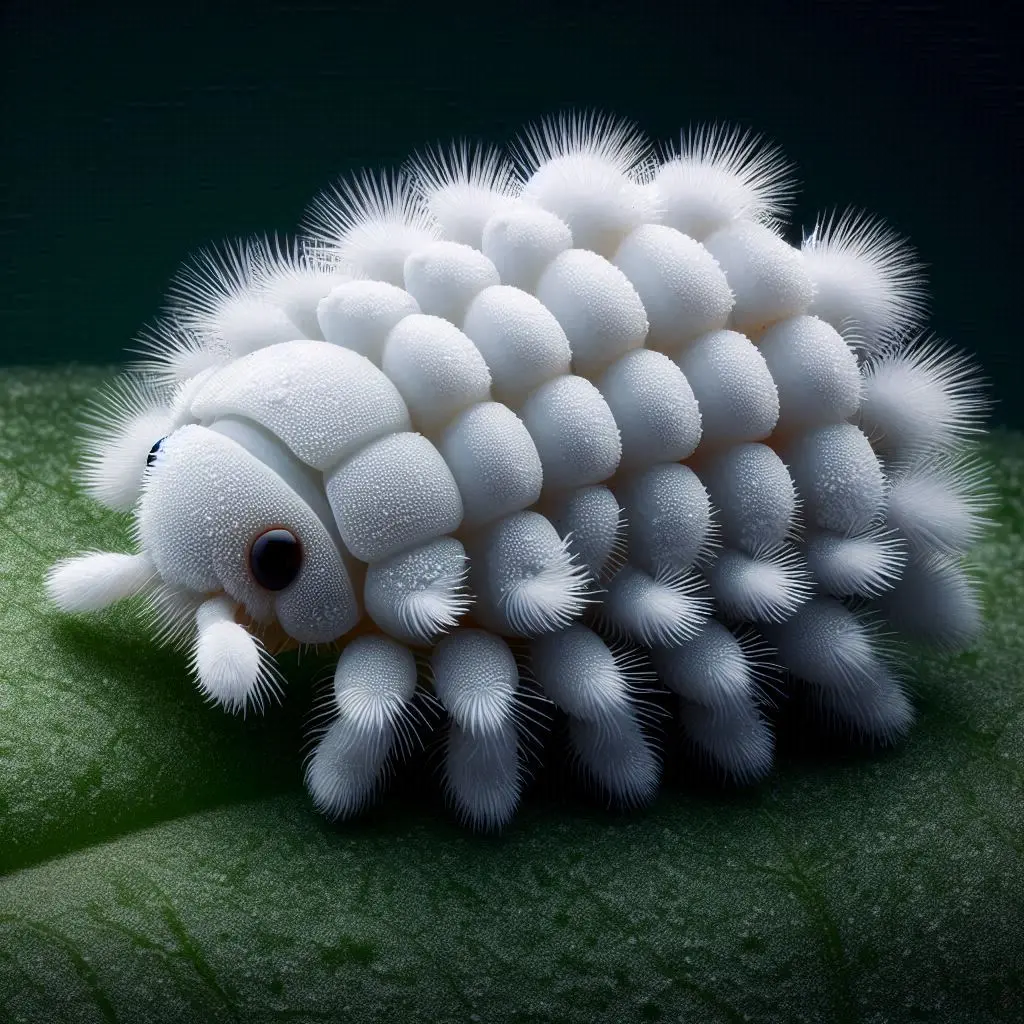
Sometimes, black spots may appear on the undersides of leaves, which is a plant’s reaction to the compost being too wet and a lack of light.
Prevention and Treatment Method for Cottony Cushion Scale in Indoor Plants:
Completely remove the heavily affected leaves. Move the plant to a brighter location and water it less to encourage the growth of new shoots and leaves.
Get to know the mealybug pest better with the help of shahrekado website:
This insect is known by this name because it is white in color and looks like snow. This insect is very small and can be seen at the end of plant leaves or on their stems and causes the leaves to wither and turn yellow.
11- Botrytis (Gray Mold)

Stems, leaves, buds, and flowers can be affected by this disease. Begonias and cyclamens are particularly susceptible to this disease.

